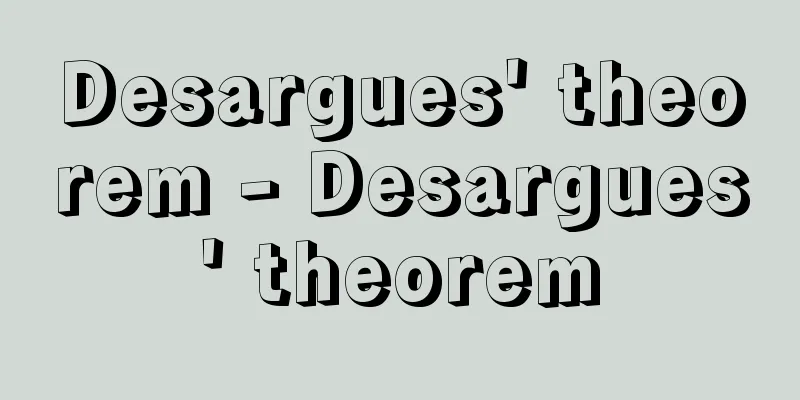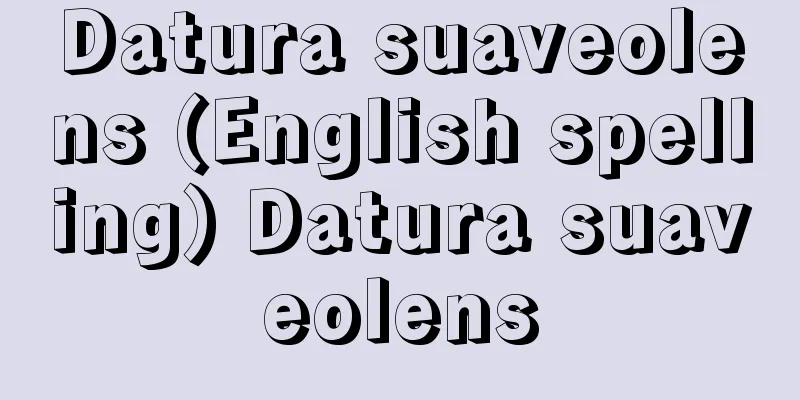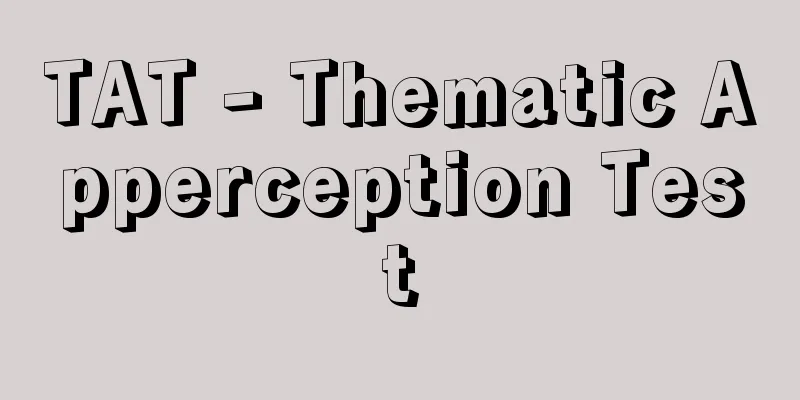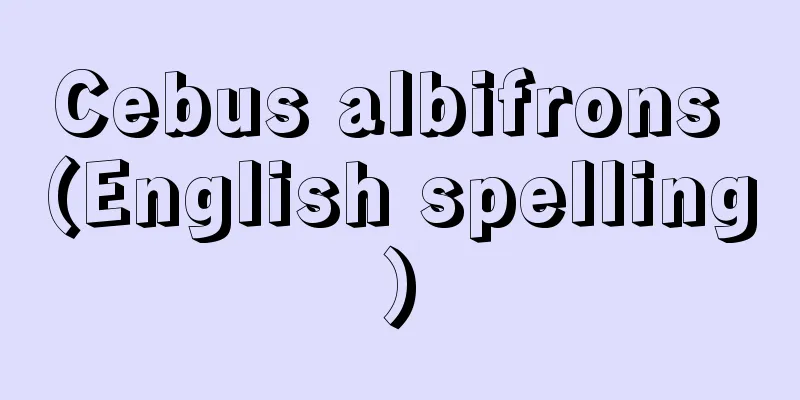Desargues' theorem - Desargues' theorem

|
When a tetrahedron O-ABC, whose base triangle ABC is on plane π, is cut by another plane π', a triangle A'B'C' is created on π' as shown in In this case, points P, Q, and R are on both plane π and π', so they naturally lie on line g, the intersection of π and π'. If you take a photograph of this tetrahedron from an appropriate direction, you get Desargues' theorem is the following theorem represented by and "In △ABC, △A'B'C', if the intersections P, Q, and R of corresponding sides BC and B'C', CA and C'A', and AB and A'B' lie on a straight line, then the three straight lines AA', BB', and CC' connecting the corresponding vertices will meet at a single point." [Tachibana Shunichi] [Reference] |©Shogakukan "> Desargues' Theorem Explained (Figure A) ©Shogakukan "> Desargues' Theorem Explained (Figure B) Source: Shogakukan Encyclopedia Nipponica About Encyclopedia Nipponica Information | Legend |
|
底面の三角形ABCが平面π上にある四面体O‐ABCを他の平面π′で切ると、のようにπ′上に三角形A′B′C′ができる。このとき点P、Q、Rは平面π上にもπ′上にもあるから、当然π、π′の交わりである直線g上にある。この四面体を適当な方向から写真に撮ればとなる。デザルグの定理は・が表す次の定理である。「△ABC,△A′B′C′において、対応辺BCとB′C′、CAとC′A′、ABとA′B′の交点P、Q、Rが一直線上にあれば、対応する頂点を結ぶ三直線AA′、BB′、CC′は一点に会する。」 [立花俊一] [参照項目] |©Shogakukan"> デザルグの定理説明図〔図A〕 ©Shogakukan"> デザルグの定理説明図〔図B〕 出典 小学館 日本大百科全書(ニッポニカ)日本大百科全書(ニッポニカ)について 情報 | 凡例 |
<<: Pros Thessalonikeis; Letters to the Thessalonians
Recommend
Tijuana - Tijuana (English spelling)
A tourist city in Baja California, in the northwe...
foxglove
...The capsule is oval and 1.5 cm long. The genus...
manslaughter
...In addition, 192 cases (12%) of neonatal murde...
Knitwear
A general term for clothing made from knitted fabr...
Thread-changing economic situation
...Also, the rationing, price and facility contro...
Theologie der Krisis (English spelling) TheologiederKrisis
…After World War I, a theological movement arose ...
School training - gakkou kyoren
Military education was imposed as a regular curric...
Theodore Roethke
1908‐63 American poet. Born in Michigan in the Mid...
Leonurus macranthus (English spelling) Leonurusmacranthus
…[Murata Gen]. … *Some of the terminology that me...
Itogamodori - The return of the thread
...It has many local names, such as Shimaara in N...
Solutre culture - Solutre culture (English spelling)
A late Paleolithic culture with the Solutre site ...
Fénelon (English spelling) François de Salignac de La Mothe-Fénelon
French author and archbishop. Born into an old no...
Yalut [island] - Yalut
A coral island in the western Pacific Ocean, part ...
Common Chemical Sense
…In addition, some insects have contact chemosens...
Cytogenetics
...Currently, research subjects include morpholog...









